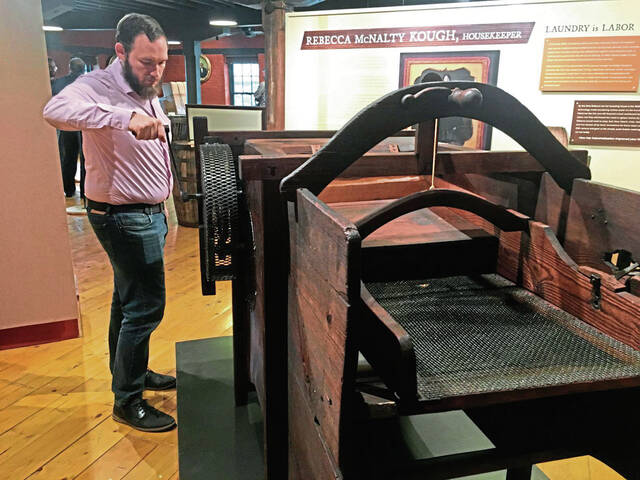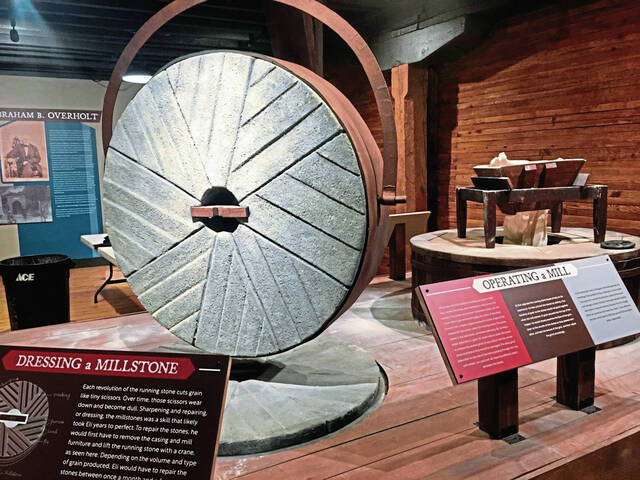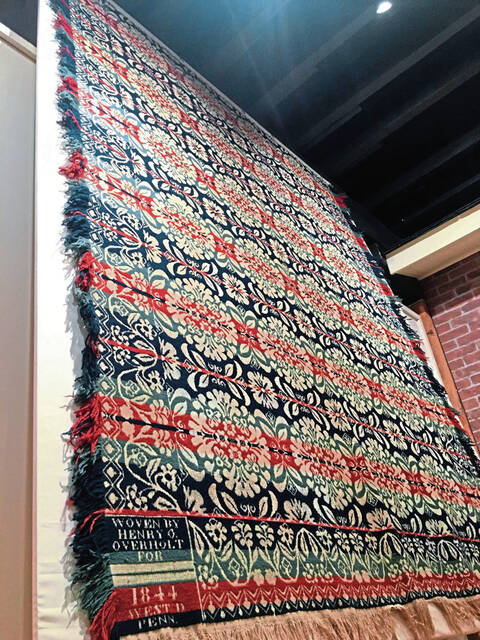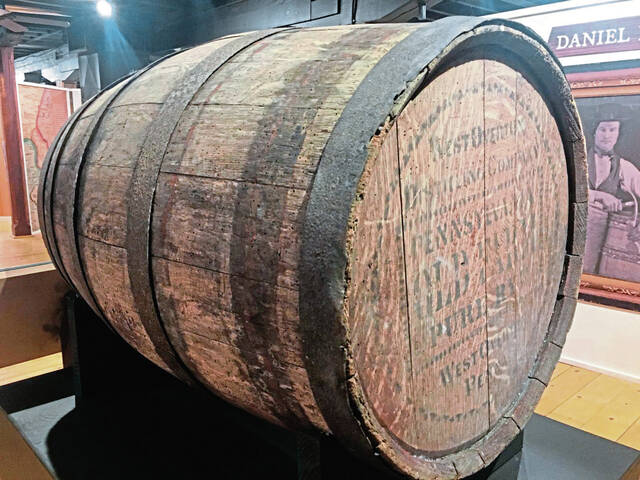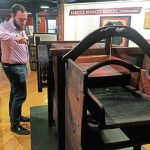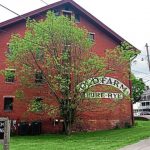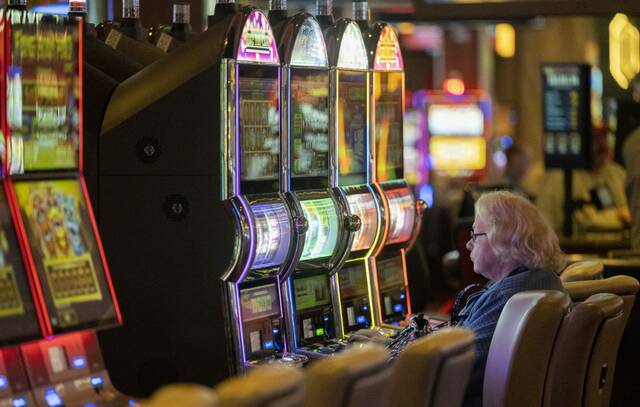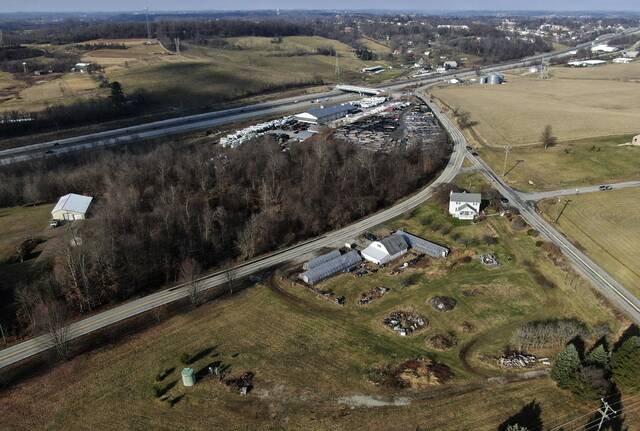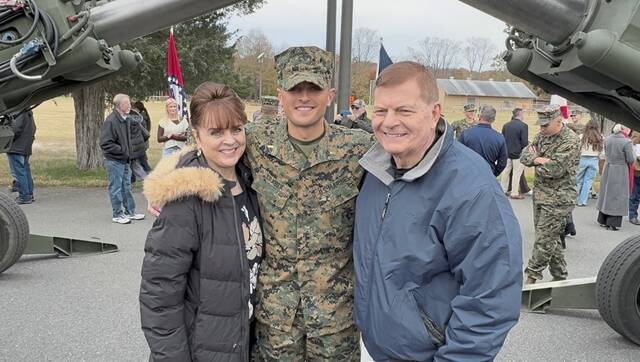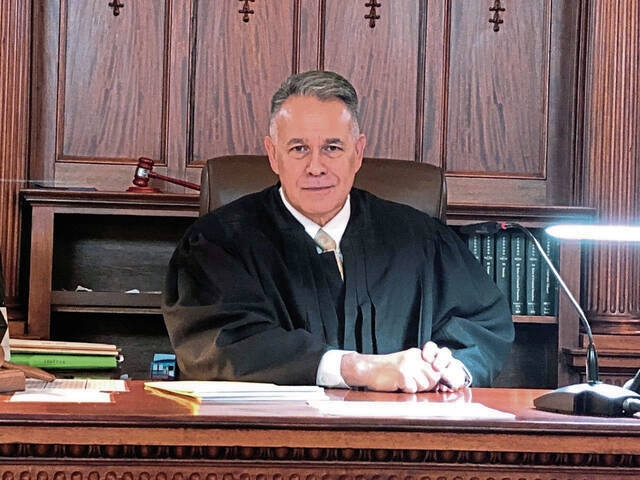John Lloyd Shallenberger was one of the lucky ones among the 19th-century laborers at West Overton.
In about 1860, when the founding Overholt family purchased a Buckeye Mower and Reaper machine, workers such as Shallenberger no longer were needed to harvest grain crops with hand tools for the family’s mill and whiskey distillery.
“This allowed one man and a team of horses to do the job of many workers,” said Aaron Hollis, director of education at West Overton Village. “It was fortunate for (Shallenberger) that he was able to pivot from agricultural work to the mercantile business.”
Hollis led research into the lives of Shallenberger and five other common village workers for a new museum exhibit, housed in a former distillery at the East Huntingdon site that began as an early-1800s farming community. Titled “Forging Ahead and Falling Behind,” the exhibit will debut Thursday, June 9 with an opening cocktail event from 6 to 8 p.m.
The exhibit explores the history of West Overton as a microcosm of the industrial revolution that transformed many communities in rural Southwestern Pennsylvania. It’s meant to engage visitors with the story of a past shifting labor market that parallels today’s workplace evolution fueled by automation and smart technology.
“New technology is great if you own a business and you can take advantage of that,” said Hollis. “But, if you’re just a worker and you’re just trying to get by, you can lose your job. We still see this today.
“These are things that people can relate to, to try to help them relate to people from the 19th century.”
“We’re very excited about this new exhibit,” said West Overton CEO Jessica Kadie-Barclay. “It’s the first one we’ve had that really focused on the people of West Overton. We’re just so proud to be able to bring this to the community.“
Shallenberger shifted to working in the company’s general store, where Overholt employees could purchase a variety of merchandise with cash, bartered goods or credit against their wages.
Shallenberger eventually was promoted to run the shop. He later opened his own store in Clarion, where he died in 1910.
There were fewer opportunities for other displaced West Overton workers.
Hollis pointed to another period agricultural machine featured in the exhibit — a fanning mill. Museum visitors will be able to try their hand at cranking the machine, creating a breeze that would have separated the harvested wheat berry from the chaff.
“This replaced the need for women in wheat processing,” Hollis said. He noted a natural breeze traditionally was needed to blow away the chaff as women tossed wheat up and down in a winnowing tray.
Some technological advancements eased the burdens of West Overton residents rather than threatening their livelihoods. In another interactive display, those touring the exhibit can crank the agitator on an early washing machine, a big step up from a washboard.
Such a labor-saving device could have been part of the success story of another West Overton denizen, housekeeper Rebecca McNalty Kough.
After the death of her husband, who crafted barrels for the Overholts, Kough relied on income from housing other company workers.
“She actually made more money as a boarding housekeeper than she did from her husband’s income as a cooper,” Hollis said.
Kough saw a son serve in the Civil War and later lived with her daughter and son-in-law in Mt. Pleasant, where she died in 1884.
Kough represents the vital contributions women made in the industrial revolution.
“Homesteading and running a household was more than a full-time job, said Kadie-Barclay. “It was women who really allowed the men to function in their roles.”
The exhibit documents other transitions in the trades practiced over time at West Overton.
“Between 1840 and 1880, West Overton really transformed. It went from just a family farm to a truly bustling industrial community,” Hollis said. He noted the population of the village nearly doubled between 1870 and 1880, rising from about 130 to 250.
Museum visitors can view a colorful “figured and fancy” coverlet featuring a floral design in cotton and wool. It was produced in 1844, before Henry O. Overholt shuttered his weaving business and became a partner in the family distillery.
A restored mine car represents the coal mining and coke industries that became the primary occupation in West Overton after a new company distillery was opened at Broad Ford, near Connellsville.
“There are also other negative impacts of industrialization,” Hollis said. “You have environmental impacts like deforestation and pollution via acid mine drainage.”
Sections of the exhibit that are being developed include a glass floor that will allow visitors to step inside one of the building’s former grain bins — capable of holding about 300,000 pounds of grain.
In another area, Hollis said, “We’re pulling things from our collection and buying reproductions to loosely recreate the general store.
An apothecary cabinet was provided by Marty Savanick, who has retired from operating an antiques and collectibles shop in Scottdale. She also donated the old-time washing machine.
Visitors will be able to open the cabinet drawers to discover and smell some of the staples villagers would have purchased more than a century ago — items such as coffee, cinnamon, cloves, dry mustard, ginger and lavender.
“It’s an opportunity to engage more senses than your eyes,” Hollis said. “It makes it a much more fun experience and much more memorable.”
One element missing from the exhibit is images of the workers whose stories are featured — including miller Eli Hoover, cooper Daniel Niswonger, weaver John McGiffin and coal digger Jacob Hauser.
Since the displays are expected to remain in place for several years, Hollis said, “I’m hoping we’ll meet descendants of these people and they can tell us stories and give us photographs of them.”
Visit westovertonvillage.org for more information about the historic site and to purchase tickets for the exhibit opening.


